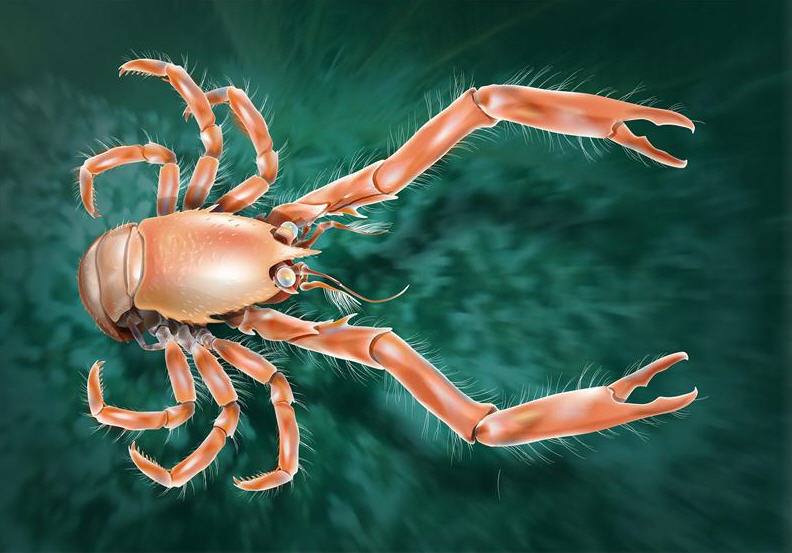Also intriguing: Its closest relative is in the Caribbean Sea.
During one of the expeditions of the research campaign INDEMARES that studies the Banco de Galicia underwater mountain, a team of scientists captured the new species of crab. Uroptychus cartesi belongs to a family called the Chirostylidae family, one of four such species that live in Europe. Three of them were discovered at the end of the 19th century and the fourth in 1976. Fourteen can be found in the Americas and more than 100 exist in the Indo-Pacific Ocean.
This crustacean is linked to the easternmost part of the Atlantic due to the majority of its morphological characteristics: it is different from European species mainly because of its shape and the number of thorns on its shell. It has more similarities with the Caribbean species Uroptychus armatus.
"Its closeness to species from the Caribbean is logical. All North Atlantic species have common features and are likely to have come from shared ancestry, who invaded the Atlantic from the Pacific and Indian Ocean a few million years ago," Enrique Macpherson, coauthor of the study and researcher at the Centre for Advanced Studies of Blanes (CEAB-CSIC) explained to SINC.

Uroptychus cartesi. Credit: Alphagalileo.org
The small orange-coloured squat lobster usually lives around deep corals and gorgonians and "tends to be abundant in submarine mountains and canyons that have been subject to little fishing," explained Macpherson, who goes on to add that gorgonians and corals are the first to disappear in trawling zones.
Despite not bearing any resemblance, this squat lobster belongs to the group of hermit crabs. Researchers have verified that their larvae have a low dispersion capacity given that they "spend very few days in the planktonic stage." The study also points out that they usually feed on small crustaceans and particulate matter.
It takes the name of Uroptychus cartesi after the researcher Joan Cartes from Barcelona's Institute of Marine Sciences because of his "significant contribution to our knowledge of Iberian deep sea fauna." Macpherson and his colleague Keiji Baba from Kumamoto University (Japan) highlight that Cartes was also the first to recognise that individuals from this species were unusual.
The six specimens captured were handed over to Barcelona's Institute of Marine Sciences and the National Museum of Natural History in Paris, France.
Citation: Baba, Keiji; Macpherson, Enrique. "A new squat lobster (Crustacea: Decapoda: Anomura: Chirostylidae) from off NW Spain" Zootaxa 3224: 49-56, 2012.






Comments